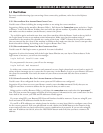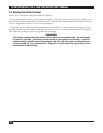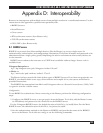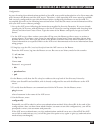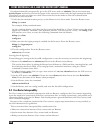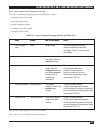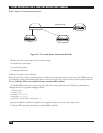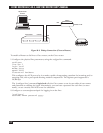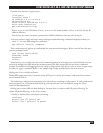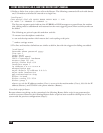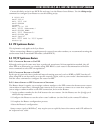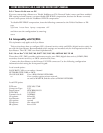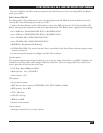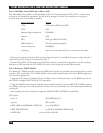
ASYNC ROUTER AR-P, AR-5, AND SYNC ROUTER USER’S MANUAL
111
Synchronous line (Cisco to Router)
This information only applies to the Sync Router.
The default encapsulation protocol for a synchronous Cisco port is not the PPP protocol. For the
synchronous Cisco port, set the encapsulation protocol to PPP. On the Cisco router, configure the port
as follows:
configure
interface serial 0
ip address w.w.w.w m.m.m.m
encapsulation ppp
Where w.w.w.w is the IP address number and m.m.m.m is the mask number.
Our Routers usually use the IP address of their Ethernet port for all interfaces (modem, sync), while
Cisco routers are usually configured with distinct IP addresses for each interface port.
If you prefer not to use distinct IP addresses for each interface port on a Cisco router, replace the IP
address statement above (“ip address w.w.w.w m.m.m.m”) with:
ip unnumbered ethernet 0
Many network managers don’t like to do this, because on a Cisco router, an unnumbered link becomes
unusable, if the interface from which it obtained its IP address experiences a failure.
Dialup connection (Cisco to Router)
Cisco routers generally have two asynchronous ports labeled “CONSOLE” and “AUX.” The CONSOLE
port (DCE) is intended to connect to an asynchronous terminal. The AUX connector (DTE) can be
connected to a V.35 bis or V.34 modem.
With Cisco routing software release 10, the AUX port can be used for dial-in or dial-out (DDR =
Demand Dialed Routing) access, which is compatible with our Router.



